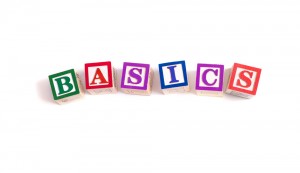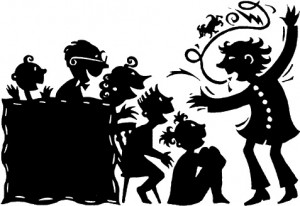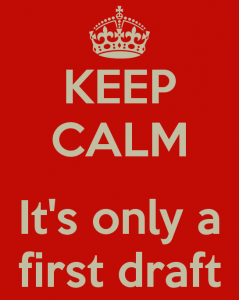As we enter the Dog Days of Summer, I offer 10 thoughts and observations as you toil on your briefs. 
1. Get out of the office! Live!
There is nothing more stifling to creativity than routine. Break old habits and make new scenery part of your routine.
If you ever watched spy movies, remember the advice: “If you think you’re being followed, take a new route to work.” Maybe it was paranoia, but the rule fits.
This is the ideal rationale to visit your new client’s showroom, factory, event or go on a sales call with a representative. Live the product or service, and learn by getting down in the product dirt.
Creatives often visit art museums, galleries, concerts, film, performing arts and other forms of stimulation to get inspired. Take a page from their book and try it yourself. The idea is to change up your thinking to see things in a new light.
2. Where do you get your best ideas? Build that space into your day.
Okay, so maybe taking a shower after the 10 AM staff meeting isn’t convenient, even though that’s your favorite “idea generating” space. But if taking a walk, sitting in a crowded bus station, or browsing the aisles of your favorite book store are reliable kick-starters, they are legitimate places to visit from time to time.
Creatives hijack routine and monotony on a regular basis by acknowledging their need for different sources of stimulation. Creative brief writers must do the same thing.
3. When you collaborate with a colleague on writing the brief, get accustomed to sharing credit.
This idea is central to the success of the copywriter/art director collaboration model, which is the basis for my recommendation for a brief-writing team. Two minds, which often view the world from different perspectives, solve a problem from different angles. Sometimes, one plays the role of idea generator to the second’s BS detector. Sometimes, both generate ideas and both have finely tuned BS detectors.
The truly successful partnerships find the balance, work off the other’s strengths, and share the glory (and the occasional mis-hit).
If you are in account management, learning how to team up with a creative to write a brief may take some practice and accommodation. Creatives may face the same challenges.
It’s good practice. The results will be well worth the effort.
4. Never forget the basics.
Writing basics: Keep your vocabulary accessible, clear, direct, friendly. Remember that the creative brief is designed to be an idea spark. It’s the first step in the creative process. Focus on keeping things simple. 
Partnership basics: If you are a new team, learn how to listen. Silence may be uncomfortable, but it is a necessary part of the brain-storming process. Figure out how both of you process information. Respect each other’s ideas and approaches.
If you’re a veteran brief writer, but still relatively new to working in a team setting to write a brief, bring your A-game, but be generous. Let the less experienced member of the team do the actual writing. This is an invaluable teachable moment.
5. A creative brief is essential to good storytelling.
Think of the creative brief as the opening chapter of the story that leads to the finished work. It’s the “once upon a time” set up for the creative team to follow.
The best brands tell stories. These stories are about us, ordinary people who live and use and rely on products and services.
If you can’t imagine where your brief is headed based on how you assemble it, how can the creative team ever figure it out? 
6. Never submit a first-draft creative brief.
As an English instructor who works with college students, I learned quickly that if I don’t require multiple drafts of an essay assignment, I’ll end up reading first drafts that were written the night before, and sometimes the morning of.
You must approach the creative brief from the same mindset. You cannot allow yourself to submit a first draft.
How many drafts should it take? There’s no rule, but I’d recommend at least three drafts before the final draft.
The first draft is your creative starter. You don’t need to share this draft except with your partner. The second draft should be submitted to multiple eyeballs. The third draft can return to a select group for a final review. Now it’s ready for final editing and then the briefing.
I’ve read thousands of briefs in my career. Believe me when I say that I can tell a first draft when I see one. 
7. Always have a point of view.
It always strikes me as odd when I read a creative brief without a clear “position.” It’s almost as if the writer were afraid of offending someone.
You can tell when you read a brief without a point of view: The proposition is weak, or tries to include too much information. There’s no clear consumer insight.
Another way to look at a creative brief: It’s a review of the product, but always a positive, thumbs-up rave!
Pretend you’re channeling the late Roger Ebert. His passion for movies was infectious. Your passion must be evident, obvious, palpable.
8. Who says you can’t have more than one brief on a project?
This one perplexes me. Most products have more than one selling point, more than one emotional connecting point. If this is true for the product or service you’ve been assigned to (and it should be), there is by definition more than one brief at your fingertips.
It comes down to writing more than one proposition. The rest of the brief can be the same. If you have more than one creative team on a project, why not give a different brief to each team?
It’s not a waste of time. It’s an investment of time into a different approach. Why not?
9. Seek feedback. Always.
I love Flannery O’Connor. Perhaps my favorite line from one of her essays is something I use on my English composition syllabi: “I write because I don’t know what I think until I read what I’ve written.”
This is her way of saying she needs the feedback of her eyes on the words that came from her pen to make sure they align with her true self.
You need feedback too, but before your brief is even written. This idea is different than #6 above. When I say feedback, I mean input, up front input. Before you put a single word on paper.
If your client has provided a client brief, use it to interview product managers, marketing folks, sales reps. Talk to your agency colleagues, too. Get their ideas.
This is a way to give everyone a stake in the outcome. They will have some buy-in before the brief is even written. Don’t underestimate the value of this kind of team building.
10. Go back and re-read the first briefs you ever wrote. What did you learn?
This can be a cringe-inducing experience, but that’s why it’s a teachable moment. We learn by making mistakes, by figuring out what went wrong and fixing it.
When I look at my earliest creative solutions, I often laugh. The same happens when I read early writing. This is the mark of maturation and…am I allowed to say it? The onset of wisdom.
The only way to understand your progress is to return to your beginnings.
A few nuggets to polish your brief writing.

